The Soviet propaganda graphics that shaped the Russian Revolution
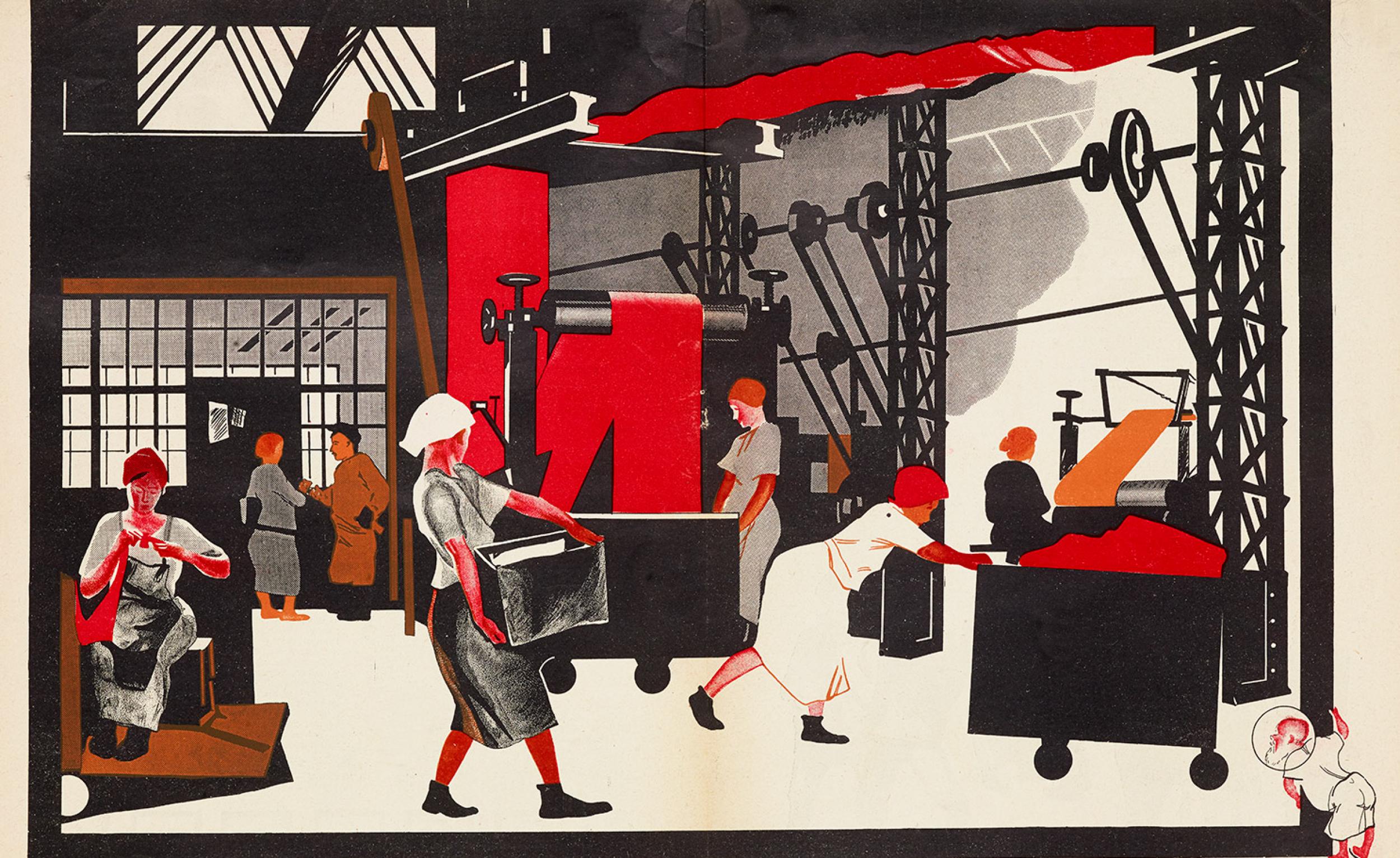
Propaganda today may come in a much more subtle and insidious form, but once not too long ago, nationalistic messages were sent out to the public loud and clear. The eye-catching graphic design of early 20th-century Soviet propaganda is an especially memorable example, and currently in the spotlight at The Wolfsonian – Florida International University, where two overlapping shows are in progress.
‘Red and Black: Revolution in Soviet Propaganda Graphics’ (5 April – 5 August) is an installation of 20 rare books, periodicals and book and portfolio plates, while ‘Construction Revolution: Soviet Propaganda Posters Between the World Wars’ (13 April – 12 August), organised by Maine’s Bowdoin College Museum of Art, shows how graphic designers interpreted the revolution’s utopian ideals for the communist dictatorship.
Together, both shows highlight the ties between culture and revolutionary ideology in the years right after the 1917 Russian Revolution – all the while showcasing the evolution and creation of a distinct graphic style.
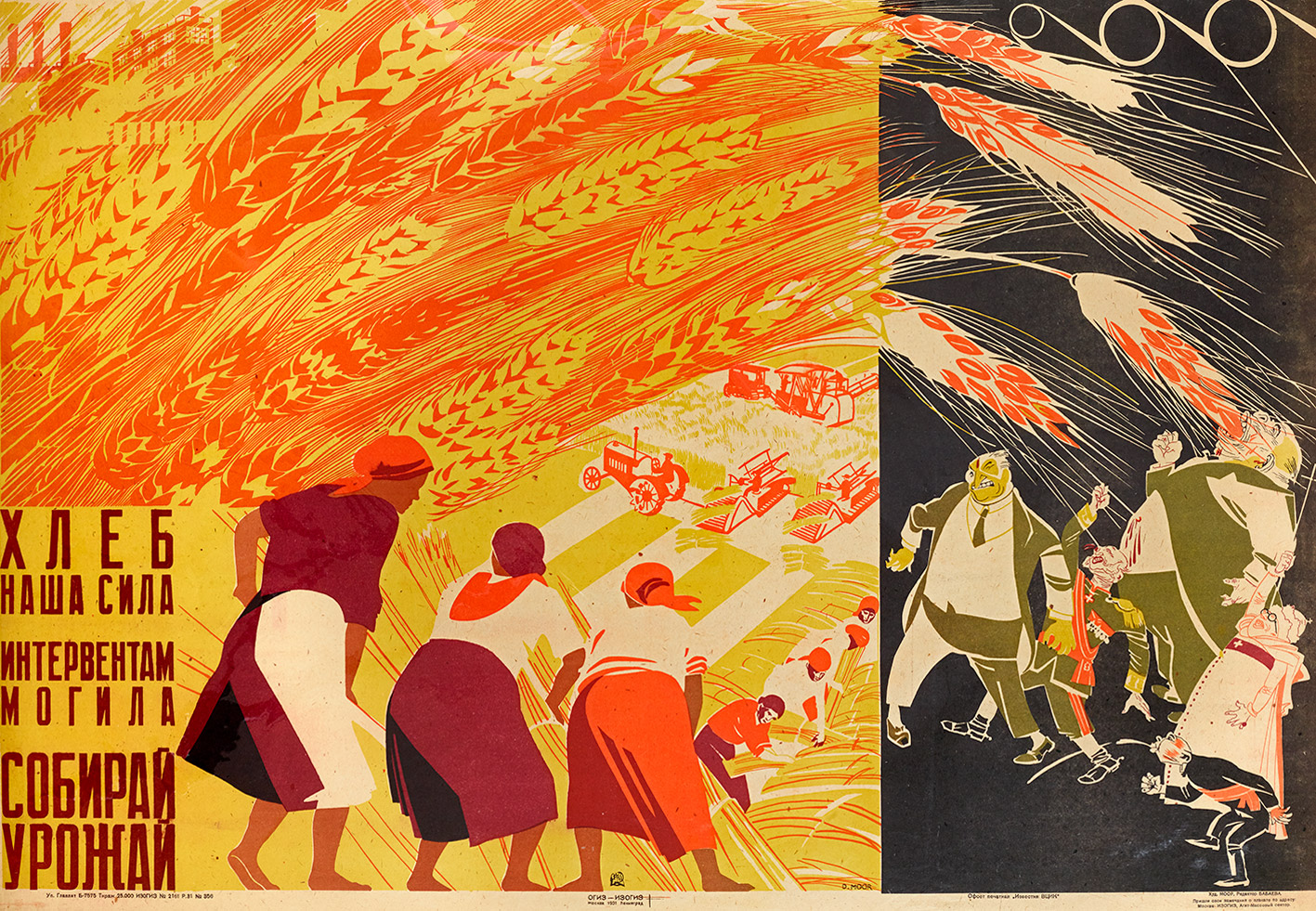
Gather the Harvest, 1931, by Dmitrii Moor. The Wolfsonian – Florida International University, Miami Beach, Florida, The Mitchell Wolfson, Jr Collection
With over 50 Soviet-era posters from the private collection of Svetlana and Eric Silverman, and rarely seen works possessed by The Wolfsonian, the ‘Construction Revolution’ exhibition includes examples by several influential members of the Soviet avant-garde, such as Vladimir Mayakovsky, Gustav Klutsis and Aleksandr Rodchenko.
The unique visual language of the posters not only encapsulates this volatile period in Russian history, but also shows how the communist ethos was translated into an accessible, fervent iteration of public art. Guided strictly by the state, yet still displaying a degree of artistic experimentation, the historic significance of these posters is especially poignant when viewed against the backdrop of politics today.
‘These works speak to the paradox of the Soviet Union during its early decades, when utopianism went hand-in-hand with manipulation,’ says Jon Mogul, Wolfsonian associate director of curatorial and education. ‘There is an undeniable sense of excitement, optimism, and experimentation in these images, though they also convey the sanitised and one-sided version of reality that contributed to the consolidation of a brutally repressive dictatorship.’

Dlia golosa (For Reading Out Loud), 1923, Vladimir Mayakovsky (author), and Gosudarstvennoe Izdatel’stvo (publisher). The Wolfsonian – Florida International University, Miami Beach, Florida, The Mitchell Wolfson, Jr Collection
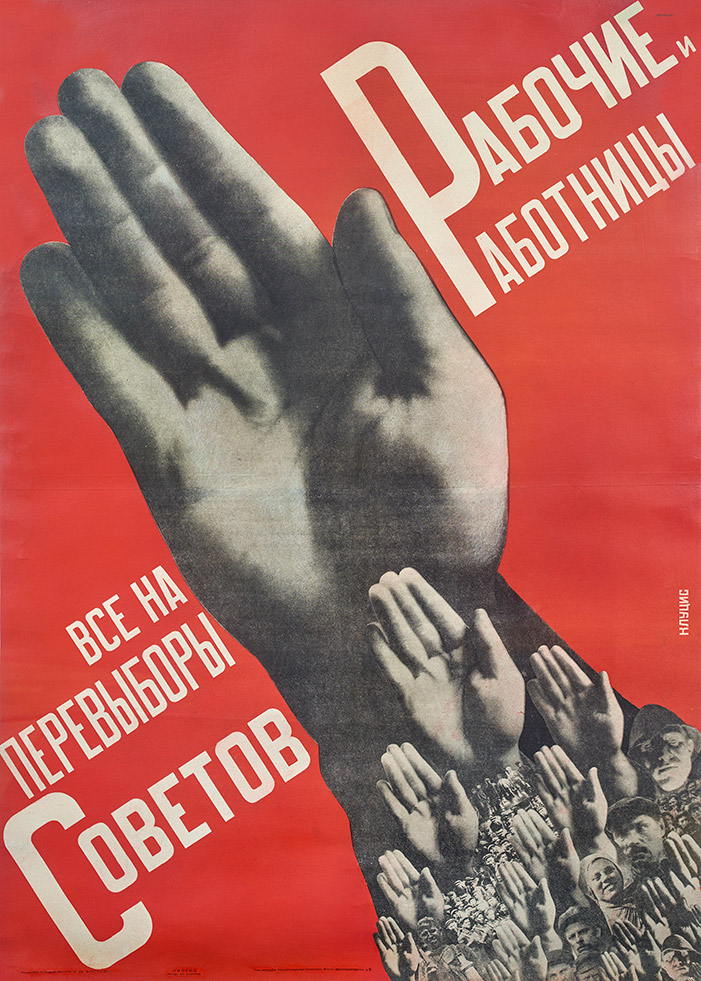
Working Men and Women – Everyone to the Election of Soviets, 1930, by Gustav Klutsis. Collection of Svetlana and Eric Silverman
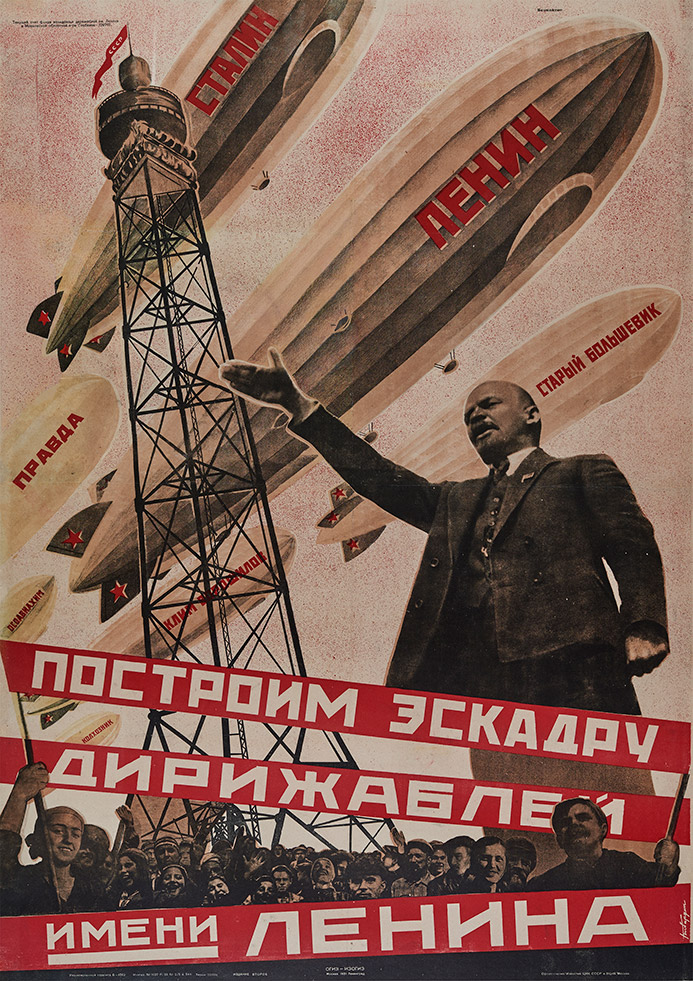
Let Us Build a Dirigible Fleet in Lenin’s Name, 1931, by Georgii Kibardin. Collection of Svetlana and Eric Silverman

International Working Women’s Day, 1930, by Valentina Kulagina. Collection of Svetlana and Eric Silverman
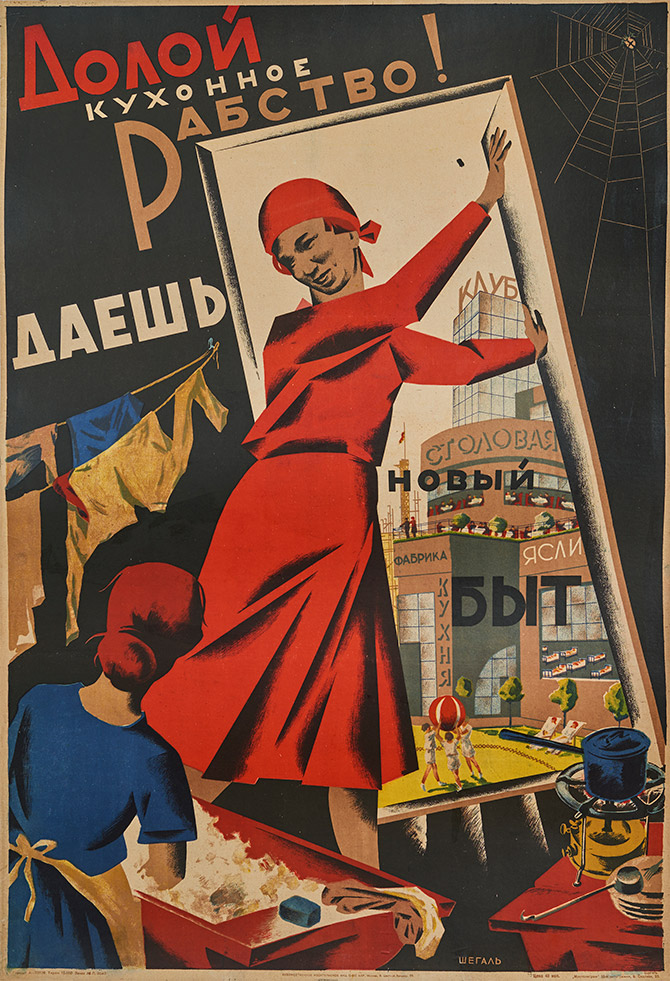
Down with Kitchen Slavery, 1929, by Grigorii Shegal. Collection of Svetlana and Eric Silverman
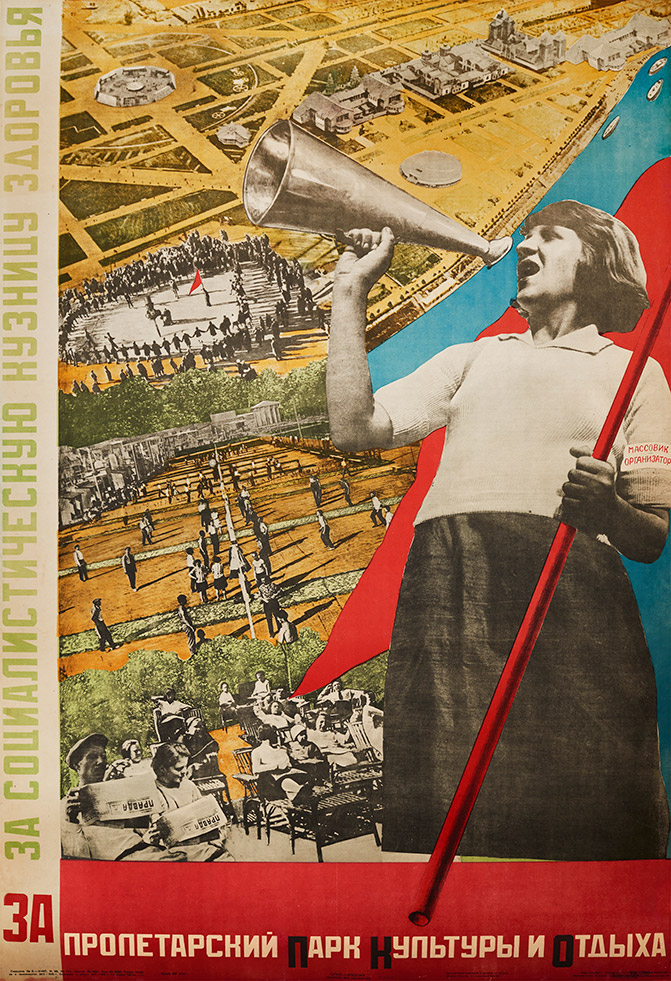
For the Proletarian Park of Culture and Leisure, 1932, by Vera Gitsevich. Collection of Svetlana and Eric Silverman
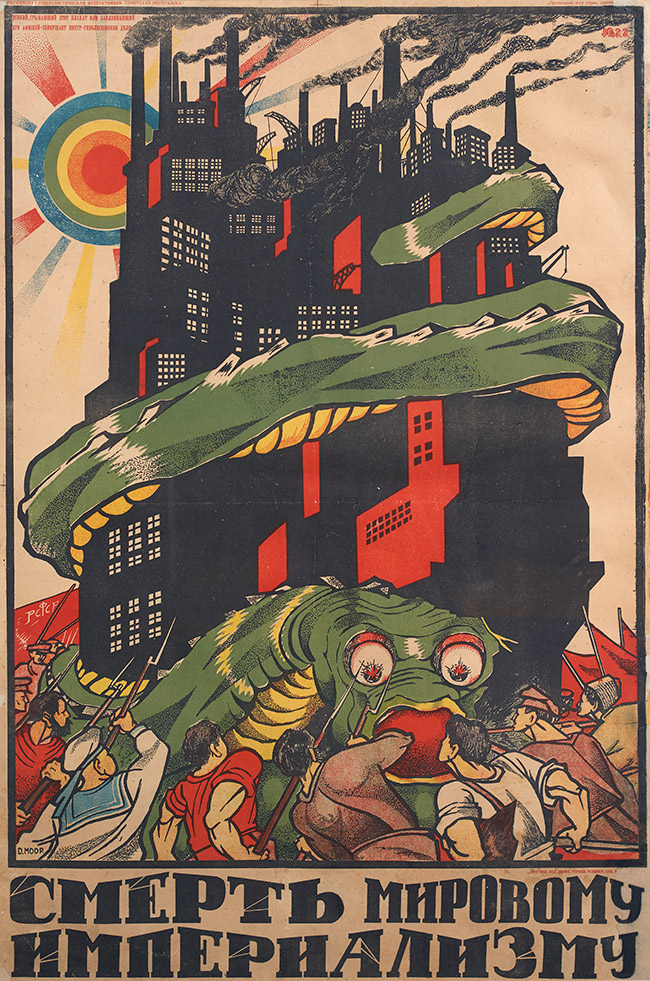
Death to World Imperialism, 1919, by Dmitrii Moor. Collection of Svetlana and Eric Silverman

Women Workers, Take up Your Rifles, 1917, artist unknown. Collection of Svetlana and Eric Silverman
INFORMATION
‘Red and Black: Revolution in Soviet Propaganda Graphics’ is on view until 5 August. ‘Construction Revolution: Soviet Propaganda Posters Between the World Wars’ is on view until 12 August. For more information, visit The Wolfsonian website
ADDRESS
The Wolfsonian
Florida International University
1001 Washington Avenue
Miami Beach
Receive our daily digest of inspiration, escapism and design stories from around the world direct to your inbox.
Pei-Ru Keh is a former US Editor at Wallpaper*. Born and raised in Singapore, she has been a New Yorker since 2013. Pei-Ru held various titles at Wallpaper* between 2007 and 2023. She reports on design, tech, art, architecture, fashion, beauty and lifestyle happenings in the United States, both in print and digitally. Pei-Ru took a key role in championing diversity and representation within Wallpaper's content pillars, actively seeking out stories that reflect a wide range of perspectives. She lives in Brooklyn with her husband and two children, and is currently learning how to drive.
-
 Year in Review: we’re always after innovations that interest us – here are ten of 2025’s best
Year in Review: we’re always after innovations that interest us – here are ten of 2025’s bestWe present ten pieces of tech that broke the mould in some way, from fresh takes on guitar design, new uses for old equipment and the world’s most retro smartwatch
-
 Art and culture editor Hannah Silver's top ten interviews of 2025
Art and culture editor Hannah Silver's top ten interviews of 2025Glitching, coding and painting: 2025 has been a bumper year for art and culture. Here, Art and culture editor Hannah Silver selects her favourite moments
-
 In Norway, remoteness becomes the new luxury
In Norway, remoteness becomes the new luxuryAcross islands and fjords, a new wave of design-led hideaways is elevating remoteness into a refined, elemental form of luxury
-
 Sculptor Woody De Othello paints a Miami museum red for a show that ‘almost hugs you’
Sculptor Woody De Othello paints a Miami museum red for a show that ‘almost hugs you’The Miami-born, California-based artist opens his first museum exhibition in his hometown as an experiential journey through life and lifeless objects
-
 Nadia Lee Cohen distils a distant American memory into an unflinching new photo book
Nadia Lee Cohen distils a distant American memory into an unflinching new photo book‘Holy Ohio’ documents the British photographer and filmmaker’s personal journey as she reconnects with distant family and her earliest American memories
-
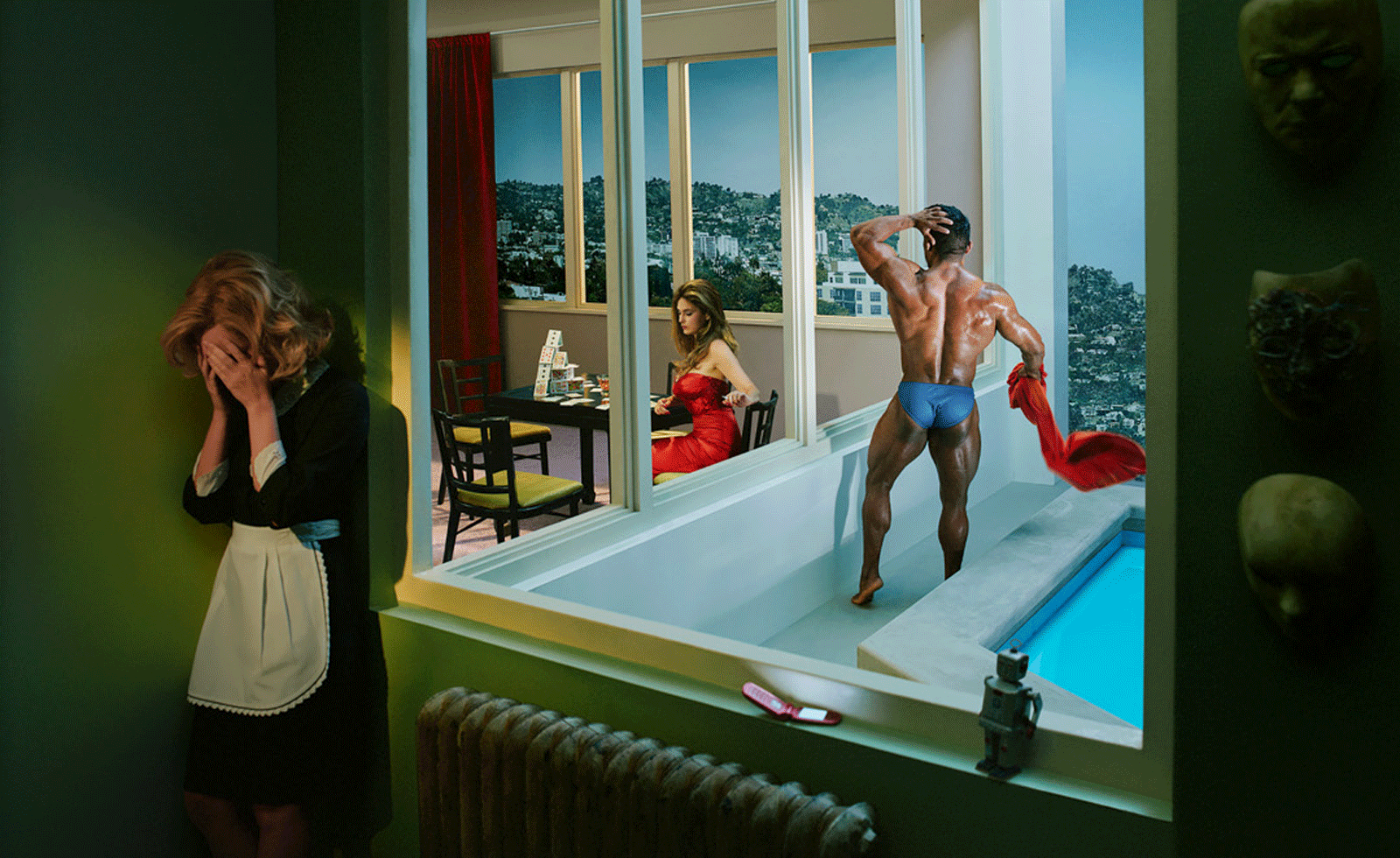 What to see at Art Basel Miami Beach 2025 – nine brilliant booths
What to see at Art Basel Miami Beach 2025 – nine brilliant boothsThe buzzy Miami art fair (5-7 December) will bring together more than 280 leading international galleries and a packed week of pop-ups and parties – start with these must-see booths
-
 Ed Ruscha’s foray into chocolate is sweet, smart and very American
Ed Ruscha’s foray into chocolate is sweet, smart and very AmericanArt and chocolate combine deliciously in ‘Made in California’, a project from the artist with andSons Chocolatiers
-
 Jamel Shabazz’s photographs are a love letter to Prospect Park
Jamel Shabazz’s photographs are a love letter to Prospect ParkIn a new book, ‘Prospect Park: Photographs of a Brooklyn Oasis, 1980 to 2025’, Jamel Shabazz discovers a warmer side of human nature
-
 The Hammer Museum in Los Angeles launches the seventh iteration of its highly anticipated artist biennial
The Hammer Museum in Los Angeles launches the seventh iteration of its highly anticipated artist biennialOne of the gallery's flagship exhibitions, Made in LA showcases the breadth and depth of the city's contemporary art scene
-
 Thomas Prior’s photography captures the uncanny fragility of American life
Thomas Prior’s photography captures the uncanny fragility of American lifeA new book unites two decades of the photographer’s piercing, uneasy work
-
 Central Park’s revitalised Delacorte Theater gears up for a new future
Central Park’s revitalised Delacorte Theater gears up for a new futureEnnead Architects helmed an ambitious renovation process that has given the New York City cultural landmark a vibrant and more accessible future